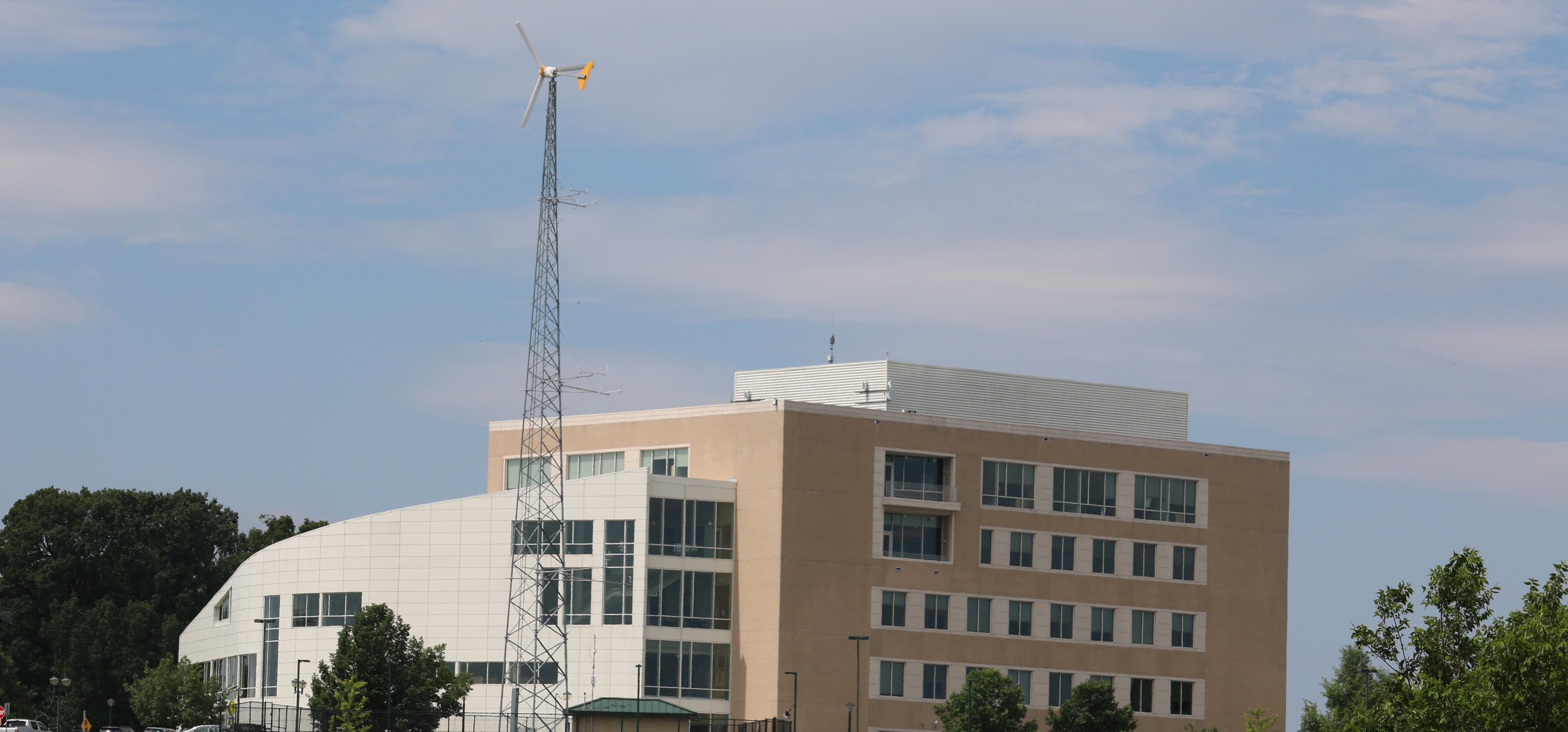
Overview
Distributed-scale wind power is that which is installed on the property of the end user of the power produced by a wind turbine (property owner) and typically assumes that such a turbine has a generating capacity as small as a few kilowatts (kW) or as large as one or two megawatts (MW). Distributed-scale wind turbines are intended to be connected directly to the electric panel of the property owner and all the power generated from the turbine is consumed by the property owner, with any excess power being transmitted back on to the grid in exchange for credit on the owner’s next electric bill. This configuration is referred to as net metering.
The wind resource in Virginia is modest, as compared to other states our wind resource is average. However, there are regions in Virginia that present a particularly strong and valuable wind resource, these areas include the highlands and mountain regions that extend along the western border of Virginia, especially in the southwest; along the eastern shore of Virginia where ocean breezes contribute, and in other areas of the state especially, southside. The vast population of agricultural producers and rural small businesses in these windier areas represent an especially viable opportunity to shift some of the generation of power in Virginia from fossil fuels and nuclear to wind.
Our Involvement
The Office for the Advancement of Sustainable Energy administers the Distributed Wind Assistance Program (DWAP) which leverages the better wind resources in the regions of Virginia where they coincide with rural small businesses and agricultural. This program advances diversification of the state’s power generation portfolio while simultaneously enabling small businesses and agricultural producers to generate power independently while reducing their electricity costs. Click here to learn more about the DWAP program.
